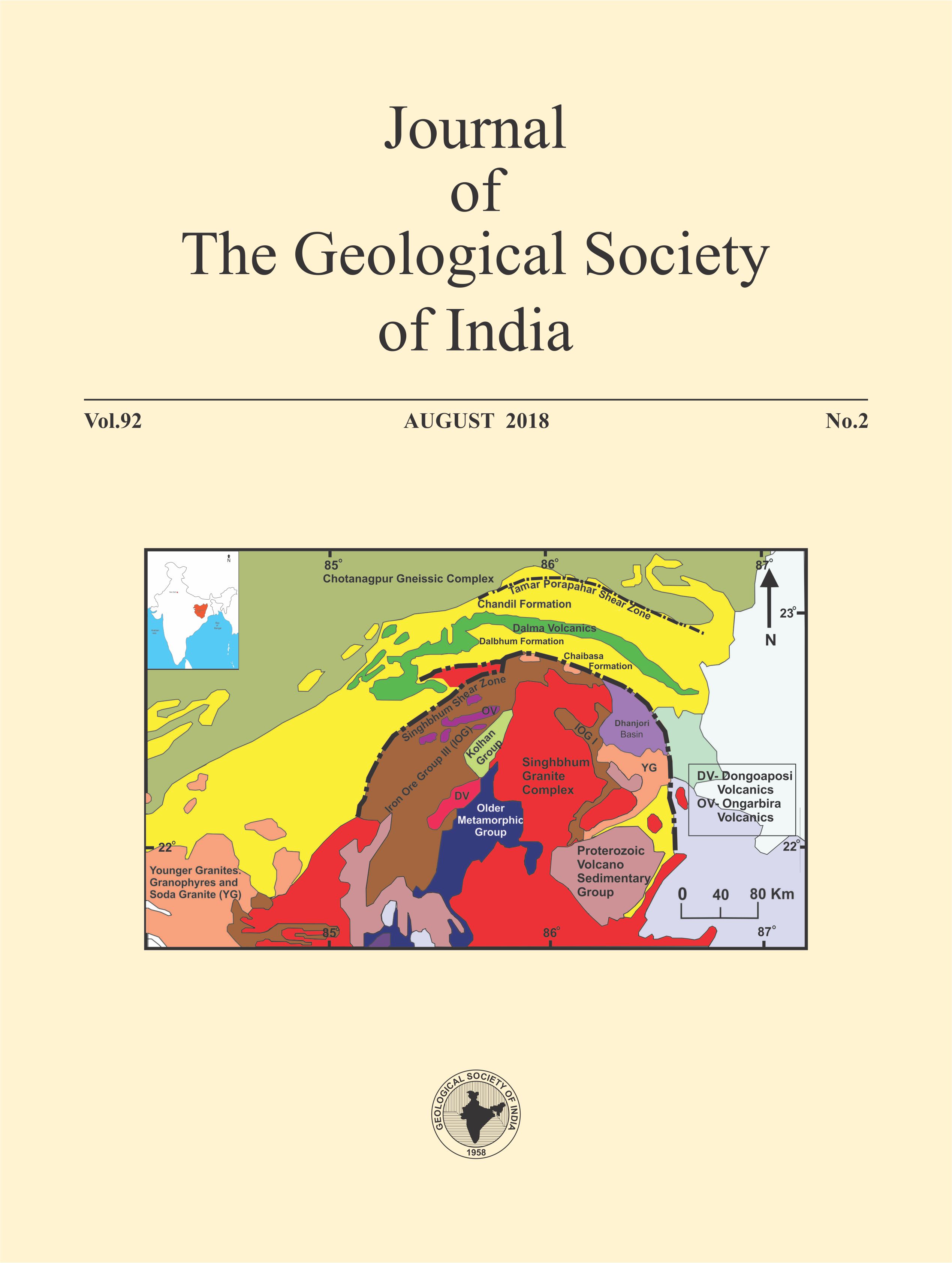Evaluation of Hydrological Components Using Hydrological Model SWAT for Malaprabha Subbasin
DOI:
https://doi.org/10.1007/s12594-018-0981-zAbstract
In this study Malaprabha sub-basin is selected for evaluation of water resource in the basin, as there is decline in flow due to reduced rainfall over years and also due to increased activities in the upstream areas of the catchment. The study focused on evaluation of hydrological components for Malaprabha sub-basin using hydrological model known as soil and water assessment tool (SWAT). The model was implemented for Malaprabha sub-basin using digital elevation model (DEM), land use, soil and meteorological data etc. The model performance was evaluated by calibration and validation approach. The calibration and validation of the model was done by using the data for a period from 1991- 2000. It is found that R2 and NSE values are 0.67 and 0.69 during calibration and 0.73 and 0.60 during validation. The both coefficients are satisfying the model results and are used for evaluating the hydrological components for the basin. Finally, the spatial distribution maps were prepared for Malaprabha sub-basin for different hydrological components like water yield, evapotranspiration, groundwater recharge, sediment yield and discharge. The results can be used for decision making purpose and further for planning of water harvesting structure.Downloads
Metrics
Issue
Section
Downloads
Published
How to Cite
References
Abbaspour, K.C., Rouholahnejad, E., Vaghefi, S., Srinivasan, R., Yang, H. and Klí¸ve, B. (2015) A continental-scale hydrology and water quality model for Europe: Calibration and uncertainty of a high-resolution largescale SWAT model. Jour. Hydrol., v.524, pp.733-752.
Arnold, J.G. and Allen, P.M. (1996) Estimating hydrologic budgets for three Illinois watersheds. Jour. Hydrol., v.176(1-4), pp.57-77.
Arnold, J.G., Moriasi, D.N., Gassman, P.W., Abbaspour, K.C., White, M.J., Srinivasan, R., Santhi, C., Harmel, R.D., Van Griensven, A., Van Liew, M.W. and Kannan, N. (2012) SWAT: Model use, calibration, and validation. Trans. ASABE, v.55(4), pp.1491-1508.
Arnold, J.G., Srinivasan, R., Muttiah, R.S. and Williams, J.R., (1998) Large area hydrologic modeling and assessment part I: Model development.
Badiger, S. and Reshmidevi, T.V. (2010) Ecosystems and Livelihoods at Crossroads: Modeling Land-use Change Impacts on Water Regimes and Downstream Water Users. ASCE-EWRI's 3rd Developing Nations Conf.
Eckstein, G. (2009) Water scarcity, conflict, and security in a climate change world: challenges and opportunities for international law and policy. Wis. Internat. LJ, v.27, pp.409.
Ghaffari, G., Keesstra, S., Ghodousi, J. and Ahmadi, H. (2010) SWAT-simulated hydrological impact of land-use change in the Zanjanrood Basin, Northwest Iran. Hydrological Processes, v.24(7), pp.892-903.
Gleick, P.H. and Palaniappan, M. (2010) Peak water limits to freshwater withdrawal and use. Proc. National Acad. Sci., v.107(25), pp.11155-11162.
Hutti, B. and Nijagunappa, R. (2011_ Identification of groundwater potential zone using Geoinformatics in Ghataprabha basin, North Karnataka, India. Internat. Jour. Geomatics and Geosci., v.2(1), p.91.
Liem, N.D., Hong, N.T., Minh, T.P. and Loi, N.K. (2011) December. Assessing Water Discharge in Be River Basin, Vietnam using GIS and SWAT model. In: Proc. National GIS Conference.
Moriasi, D.N., Arnold, J.G., Van Liew, M.W., Bingner, R.L., Harmel, R.D. and Veith, T.L. (2007) Model evaluation guidelines for systematic quantification of accuracy in watershed simulations. Trans. Asabe, v.50(3), pp.885-900.
Nagraj S. Patil and Priyanka S. Desai (2016) Runoff and Sediment Yield Modeling for Malaprabha Sub-Basin using SWAT Hydrological Model. Internat. Jour. Agricultural Sci., v.7(2), pp.200-208.
Nagraj S. Patil and Rajashekar S. Laddimath (2016) Statistical downscaling of GCM data using Artificial Neural Network for Bhima basin. Internat. Jour. Appld. Environ. Sci., v.10(4), pp.1493-1508.
Neitsch, S.L., Arnold, J.G., Kiniry, J.R. and Williams, J.R. (2011) Soil and water assessment tool theoretical documentation version 2009. Texas Water Resources Institute.
Priyanka and Nagraj S. Patil (2016) Runoff modelling for MalaprabhaSub basin using SWAT hydrological model, International Jour. Res. Engg. Tech., v.5(7), pp.35-38.
Reshmi, T.V., Christiansen, A.B., Badiger, S. and Barton, D.N. (2008) Hydrology and water allocation: comprehensive database and integrated hydro-economic model for selected water services in the Malaprabha River Basin. Report SNO 5695–2008.
UN (2006) The United Nations World Water Development Report 2: Water” a shared responsibility, p46. Accessible at: http://unesdoc.unesco.org/ images/0014/001454/145405E.pdf
United Nations' World Water Development Report (WWDR4) accessed from (http://www.unesco.org/fileadmin/MULTIMEDIA/HQ/SC/pdf/ WWDR4%20Background%20Briefing%20Note_ENG.pdf).

 Nagraj S. Patil
Nagraj S. Patil






